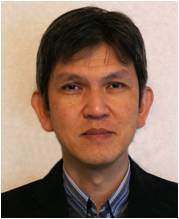Faculty
Atusi Kurita
Major research fields
 Optical Physics
Optical Physics
Professor Kurita's recent research interest is in the experimental investigations of various optical phenomena and optical functions associated with a random optical medium. A random optical medium is a medium in which many microparticles are distributed randomly, where a light ray is scattered many times. White paint, yogurt, and chalk are examples of random optical media. Although it is a common and familiar kind of materials, in a random optical medium, various novel and challenging phenomena take place. For example, when the scattering becomes very strong, it is anticipated that 'localization of light' occurs, which means that light waves are captured in the medium and cannot move. Moreover, it has been known that a laser action occurs when the amplification medium is mixed with random media although there is no resonator to confine light. This interesting phenomenon is called 'random laser' and has been studied extensively for a decade.
On the other hand, we have recently found that if random media are combined with a photo-reactive material, a kind of optical memory effects occurs in which the frequency, the wave-front, and the polarization state of the incident light are recorded. Both the laser action and the memory effect are interesting as a science as well as the seeds for the application.
Major relevant publications
- M. Tanaka, Y. Miyako, K. Nishigaki, A. Kurita, H. Hanzawa, "Effects of ZnO Addition on Doping of Eu3+ions into Y2O3", Electrochem. and Solid-State Lett., 11 (2008) J61-J63.
- A. Kurita, Y. Kanematsu, T. Kushida, T. Sagisaka, Y. Yokoyama, "Optical memory effect by interference of multiple-scattered light in a fluorescent fulgide derivative", Mol. Cryst. Liq. Cryst. 344 (2000) 205-210.
- A. Kurita, Y. Kanematsu, M. Watanabe, K. Hirata, T. Kushida, "Wavelength- and angle-selective optical memory effect by interference of multiple-scattered light", Phys. Rev. Lett. 83 (1999) 1582-5.



